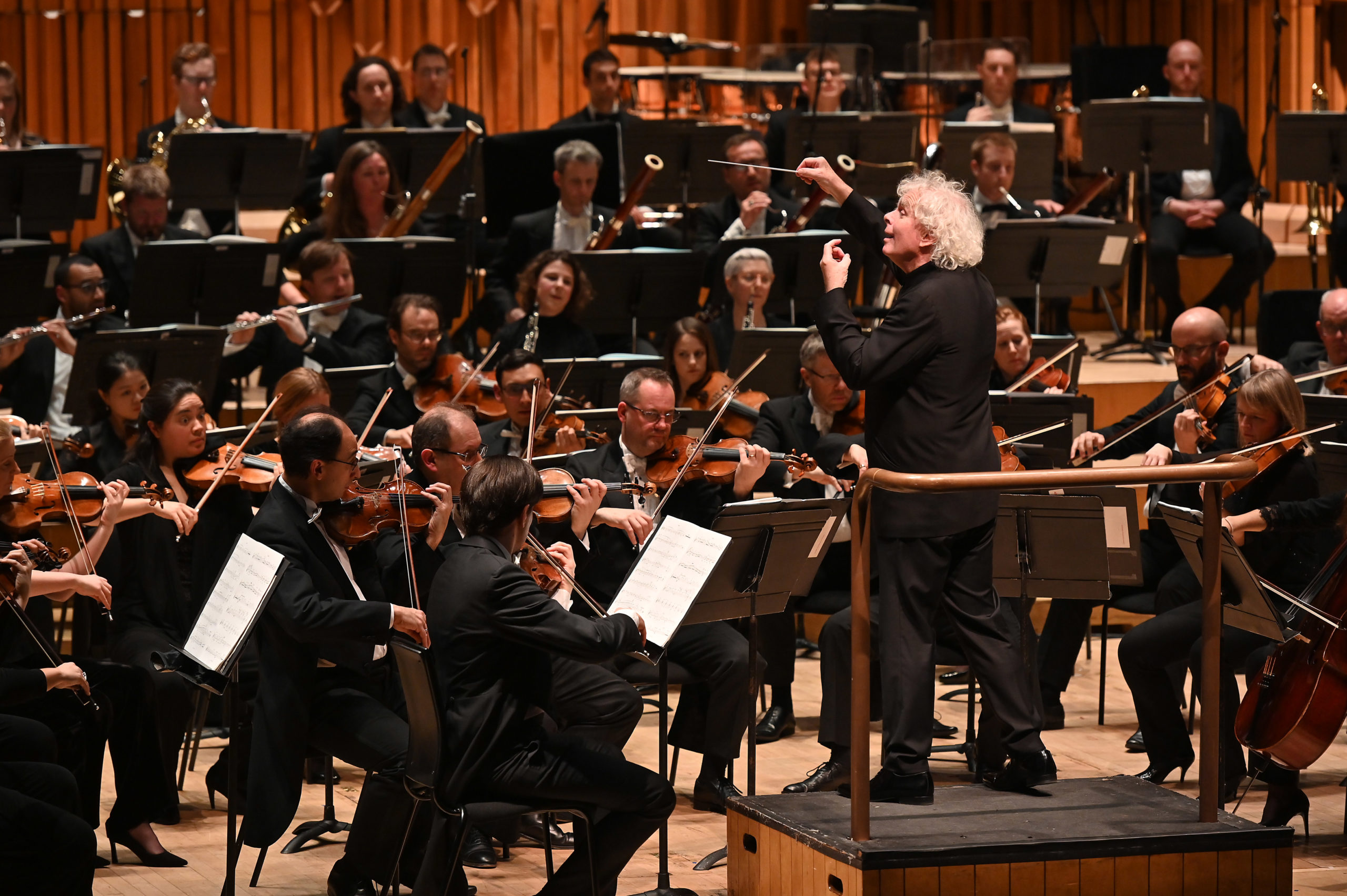It is rare for concert-goers to experience an orchestra that lives, breathes and pulses with the vigor of one organism as the London Symphony Orchestra (LSO) does. It is even less often that an orchestra gets to play for an audience as attuned and fervent as the gathering of students, families and music aficionados from the Stanford community at Bing Concert Hall on the evening of Saturday, March 19.
Indeed, Sir Simon Rattle — whose reputation as one of the greatest conductors alive precedes him, having served as Artistic Director for both the LSO and Berlin Philharmonic — walks the fine line between eccentricity and poise. He ultimately left listeners feeling as if they had experienced a long, inside joke. Such a phenomenon could be possible only with the presence of a flawlessly synchronized orchestra and meticulously constructed program.
The night began with a crowd pleaser — Antoine Dvorak’s “American Suite.” Dvorak first composed the suite for piano in 1894 and only later arranged it for orchestra — but he passed away before he ever witnessed the orchestral version performed. Ingredients of Bohemian music and New World folk inspirations from the artist’s time in the States permeate the piece in the form of lively, lyrical motifs: a dash of jubilation here, a spritz of melancholy there.
The London Symphony coursed from minor to major themes with such ease and grace that one might describe the group as a well-oiled machine; this characterization, however, would insult the soulfulness of a performance that was anything but mechanic. Upper and lower strings performed with the expressive interplay of two swans in a courtship dance, while the flute and oboe glided through lines in unison. Even principal cellist Rebecca Gilliver’s pizzicatos as shapely arcs rather than elementary plucks showcased a zealous attention to detail. This opener certainly pleased the crowd — the end of the allegro finale was signified with the subtlest “yipee!” from a member of the choral terrace, followed by a smattering of laughter.
What followed was “Lilacs for Voice & Orchestra,” a far more sorrowful expedition. Composed by George Walker as a tribute to Walt Whitman’s elegy for Abraham Lincoln, the piece is primarily carried by three vessels through three movements: lilac, star and bird. The renowned Nicole Cabell, who won BBC’s Cardiff Singer of the World competition in 2005, sang in a silky timbre. What impressed me most was Cabell’s interpretative technique, from the pursed lips of a despondent look in the moments before the second section, the star, to the conniving eyebrow raise before the third, the bird. I am still in awe at how one human can fill a hall with such immense grief and clarity.
After intermission came Robert Schumann’s Symphony No. 2 (dedicated to Oscar I, former king of Sweden and Norway), a conspicuous progression marked by the absence of a score and stand where Rattle had previously used one. The brass began at the forefront and took a backseat in the second movement. The end of this scherzo prompted collective chuckles in the audience due to the pacing and element of subtle surprise. The finale, “Allegro Molto Vivace,” was quietly triumphant and utterly satisfying — Rattle’s understated sweeping of his baton on the last note was quite uncommon, compared to the typical overdramatic fist pump to the air, but I enjoyed it. Perhaps this nuanced interpretation can be attributed to Schumann’s health — at the time of composition he battled significant issues to showcase this ascendance of positivity.
Rattle conducted with the utmost dexterity — his right hand moving like a wandering vector in a three-dimensional field while each finger of his left fluttered as if trilling on the piano. Even to a seasoned musician, these gestures could be muddling, if not cryptic. To the members of the London Symphony, what seemed hand-wavy made perfect sense. Without a beat, or any upward glances for that matter, the orchestra moved as one.
I wonder if, in the making of this efficiency, one could forget the length of a breath. This phenomenon occurred in both the “American Suite” and the symphony, as the group pursued each note without hesitation, even purposeful ones. Yet Sir Rattle also possesses far greater creative liberties than I do, and upon further examination of other recordings, he utilizes phrasing and timing in these pieces as some sort of lyricism, much like the ebb and flow of tidal waves.
A standing ovation quickly led to an encore, excerpts from Dvorak’s “Slavonic Dances,” because, in the words of Sir Simon Rattle himself, “a little more Dvorak makes the world a better place.” The orchestra had plenty of fun: two oboists jovially turned to each other in delight during a solo.
Listening to this British ensemble of musicians, clearly comfortable and elated in their performance, would make any regular concert-goer feel at peace. This atmosphere was supplemented with intentional silences between movements and enlightening commentary from the audience. With this unworried ease of finally performing in the United States after the pandemic, perhaps it was not that a crop of Brits had appeared at Stanford’s doorstep — rather that a hall of Californians had been transported to the capital of the United Kingdom for a few hours to witness the lovely, miraculous London Symphony Orchestra.
Editor’s Note: This article is a review and includes subjective opinions, thoughts and critiques.
